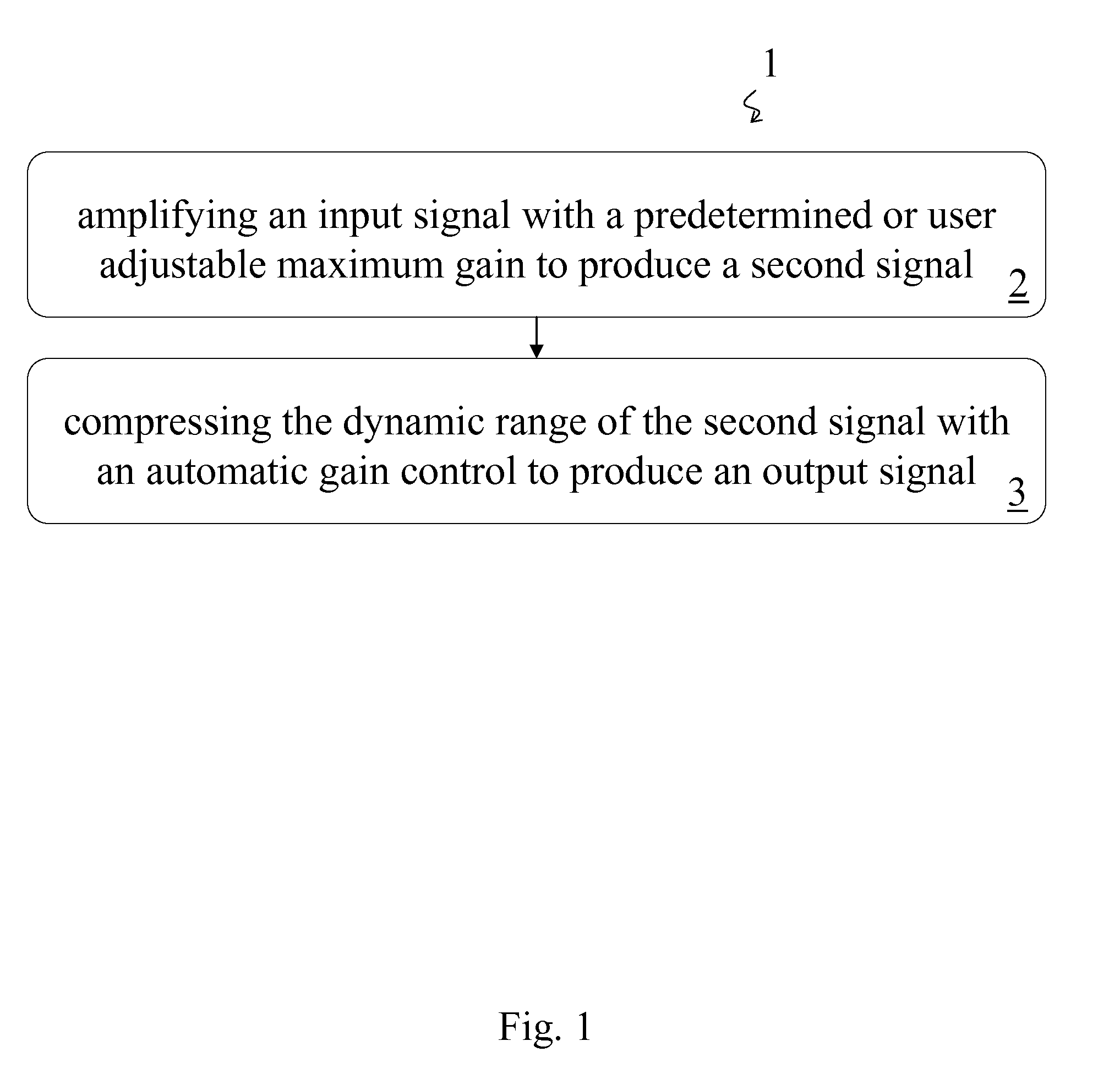Amplifier and Method of Amplification
a technology of amplifier and amplifier, applied in the direction of volume compression/expansion, frequency response correction, untuned/low-frequency amplifier, etc., can solve the problem of insufficient unity gain of loud sounds, impaired cochlear function,
- Summary
- Abstract
- Description
- Claims
- Application Information
AI Technical Summary
Benefits of technology
Problems solved by technology
Method used
Image
Examples
example implementation
[0059]
[0060]For example, there may be two band filters, creating high-pass and low-pass band channels. The characteristic of the low-pass filter may be such that the band gain begins to fall above 500 Hz and is 6 dB down at 1000 Hz. The characteristic of the high-pass filter may be such that the band gain begins to fall below 2000 Hz and is 6 dB down at 1000 Hz. Preferably, when the two bands have equal gain, the broadband frequency response of the recombined signal is flat.
[0061]A user operated gain (“Volume”) control may set the maximum gain of the high-frequency band amplifier 39. A “Tone” control may set the low-frequency band gain, or may set the ratio of high- to low-frequency band gains. The tone control may have the constraint that the total low-frequency band gain cannot exceed the total high-frequency band gain, and may also have the further constraint that the total low-frequency band gain cannot be more that 30 dB less than the total high-frequency band gain. Setting the...
example curves
[0071]
[0072]FIG. 8 through FIG. 13 are example sets of curves describing the functioning of the amplifier. The particular values in this description are as implemented in a telephone system by a telephone manufacturer; however, the actual numbers of Volume and Tone settings may be changed, leading to different numbers of possible I / O and frequency response curves. In FIG. 8 and FIG. 9 are shown input / output (I / O) curves, which are samples of the numerous possible low-frequency and high-frequency (LF and HF) I / O pairs in this implementation. Only a sample of curves at the Normal (FIG. 8) and Treble (FIG. 9) extremes is shown. The curves not shown may be interpolated across numerous possible Volume (gain) settings, such as between 0 and 50 dB, and numerous possible Tone settings per Volume setting, between Normal and Treble. The number of Tone settings may be chosen to increase as the Volume setting increases.
[0073]In FIG. 10 and FIG. 11 are shown output versus frequency response curv...
PUM
 Login to View More
Login to View More Abstract
Description
Claims
Application Information
 Login to View More
Login to View More - R&D
- Intellectual Property
- Life Sciences
- Materials
- Tech Scout
- Unparalleled Data Quality
- Higher Quality Content
- 60% Fewer Hallucinations
Browse by: Latest US Patents, China's latest patents, Technical Efficacy Thesaurus, Application Domain, Technology Topic, Popular Technical Reports.
© 2025 PatSnap. All rights reserved.Legal|Privacy policy|Modern Slavery Act Transparency Statement|Sitemap|About US| Contact US: help@patsnap.com



